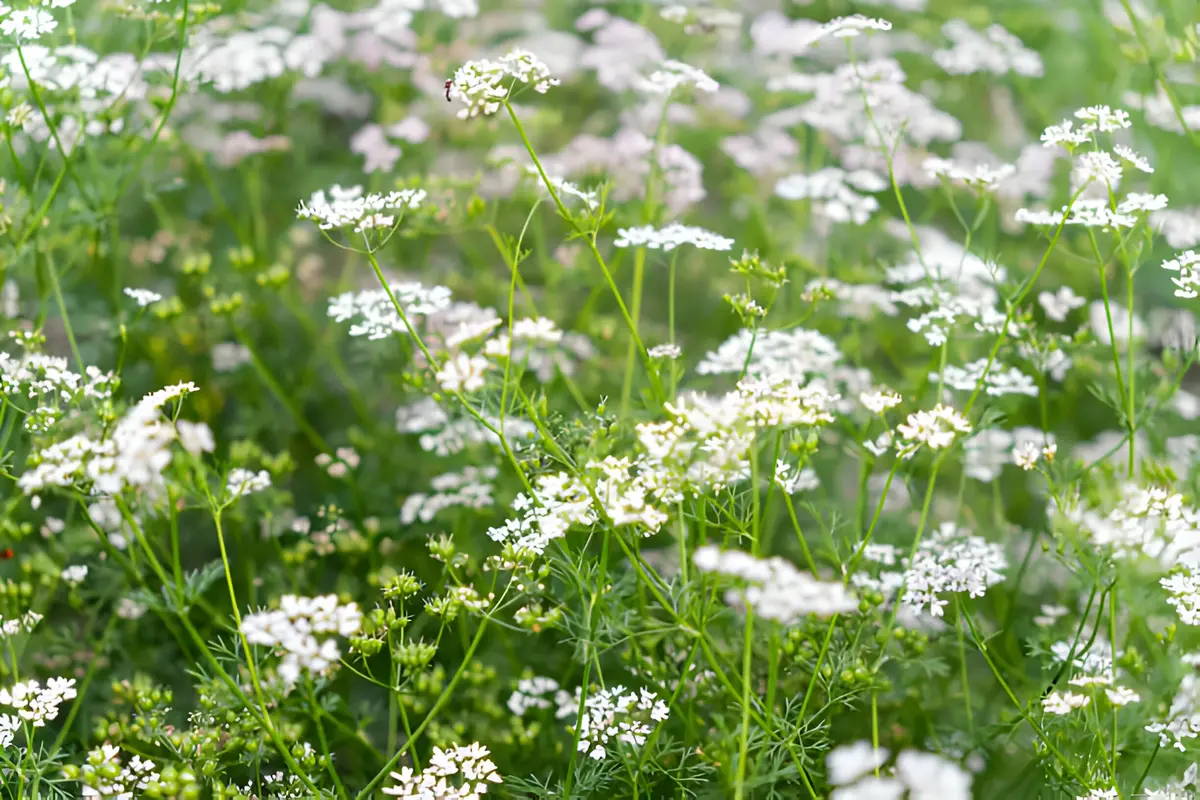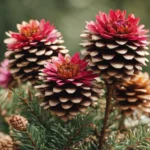Cilantro, known scientifically as Coriandrum sativum, is a staple herb in many culinary traditions. However, gardeners often encounter a common issue: cilantro plants unexpectedly flowering, a process known as bolting. This article aims to demystify why cilantro bolts and what can be done about it, providing valuable insights for both novice and experienced gardeners.
Cilantro’s Growth Cycle
Cilantro undergoes a specific growth cycle that begins with seed germination and progresses through a vegetative stage, where leaves develop, to a reproductive stage, where flowers emerge. This cycle is influenced by various environmental triggers and genetic factors. Understanding these stages is crucial in managing and utilizing cilantro effectively in the garden.
Reasons Behind Cilantro Bolting
Bolting in cilantro can be attributed to several factors:
- Environmental Triggers: Cilantro is sensitive to changing environmental conditions, particularly shifts in temperature and light.
- Genetic Factors: The tendency to bolt can also be inherent in certain cilantro varieties, with some being more prone to bolting than others.
- Plant Age and Maturity: As cilantro plants mature, they naturally progress to the flowering stage as part of their lifecycle.
Temperature and Its Effects on Cilantro
Temperature plays a significant role in cilantro bolting. Cilantro prefers cooler temperatures and often bolts when exposed to warmer conditions:
- Rising Temperatures: As temperatures rise, particularly in late spring or early summer, cilantro plants receive a signal to begin the reproductive phase, leading to bolting.
- Optimal Growing Temperatures: Cilantro grows best in temperatures between 50°F and 85°F (10°C and 29°C). Maintaining this temperature range can help delay bolting.
- Growing in Warmer Climates: In warmer regions, it’s beneficial to grow cilantro in partial shade or during cooler months to avoid premature bolting.
Light Exposure and Cilantro Flowering
Light, particularly the length of daylight, significantly influences cilantro’s growth and bolting. Here’s how:
- Day Length: Cilantro tends to bolt faster as the days get longer in late spring and early summer. This response to day length is a natural trigger for the plant to enter its reproductive phase.
- Managing Light Exposure: To delay bolting, you can manipulate light exposure. Planting cilantro in a location that receives partial shade can reduce the intensity of light it receives, potentially slowing down the bolting process.
Water Stress and Nutrient Factors
Water and nutrients also play a role in the timing of cilantro’s bolting:
- Water Stress: Both overwatering and underwatering can stress cilantro plants, leading to early bolting. Consistent, moderate watering is key to keeping cilantro in its leafy stage for longer.
- Soil Nutrient Levels: While cilantro does not require heavily fertilized soil, an appropriate balance of nutrients can support robust leaf growth. Over-fertilization, especially with nitrogen-rich fertilizers, can sometimes hasten the bolting process.
Harvesting and Usage of Flowering Cilantro
Once cilantro bolts, it’s important to understand how to harvest and use it:
- Harvesting After Bolting: The leaves of bolting cilantro can become smaller and more bitter, but they are still edible. It’s best to harvest these leaves before the plant flowers for the best flavor.
- Using Cilantro Flowers and Seeds: The flowers of cilantro are also edible, offering a milder cilantro flavor. Once the plant completes its flowering stage, it produces coriander seeds, which are used as a spice in various cuisines.
Preventing Early Bolting in Cilantro
For gardeners looking to extend the harvest period of cilantro’s leaves, here are some effective strategies to prevent or delay bolting:
- Choose Bolt-Resistant Varieties: Some varieties of cilantro are bred to be slow-bolting. Opt for these types when planting, as they are less sensitive to environmental triggers.
- Successive Planting: Plant new cilantro seeds every few weeks to ensure a continuous supply of fresh leaves. As some plants begin to bolt, others will be entering their prime leafy stage.
- Optimal Planting Time: In warmer climates, plant cilantro in the late summer or early fall so it can grow during the cooler months. In cooler climates, an early spring planting is ideal.
- Providing Shade: Use garden structures or other plants to create partial shade, especially during the hottest part of the day. This can help keep the soil and ambient temperature around the cilantro cooler.
- Adequate Watering: Maintain a consistent watering schedule. Mulching around the base of the plants can help retain soil moisture and keep roots cool.
- Proper Fertilization: Use a balanced fertilizer, but avoid over-fertilizing, particularly with high nitrogen content, as this can promote rapid growth that leads to bolting.
Conclusion
Understanding why cilantro bolts is crucial for any gardener wishing to make the most of this herb. By controlling environmental factors such as temperature, light, and water, and by choosing the right varieties, you can significantly delay the bolting process. This allows you to enjoy a longer harvest period and make the most of both the leaves and seeds of cilantro. Embrace the challenge of growing cilantro as an opportunity to hone your gardening skills and enjoy fresh flavors straight from your garden.


